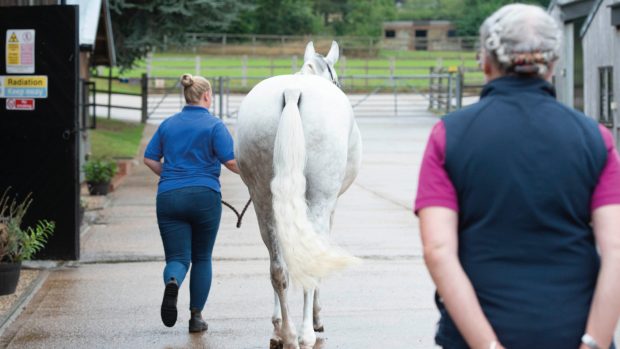My horse was recently referred to a top equine veterinary practice for lameness investigation. After locating low-grade lameness in both front feet, an MRI (magnetic resonance imaging) scan was recommended. Unlike X-rays or ultrasound, that give information on either bone or soft tissue, MRI provides excellent images of both structures simultaneously.
As a condition of my insurance policy, I had to inform the insurers that MRI would be taking place — not necessary for X-ray or ultrasound. Written permission was eventually granted only after both my vet and I completed a hastily faxed claim form. This delay resulted in my horse spending two extra nights at the clinic, for which I will have to pay half, and the insurance company will only pay half the cost of the scan.
Had my horse been X-rayed and scanned at a clinic without MRI facilities, the insurance company would have paid the costs in full. The bottom line on the claim would have been much the same as that from the MRI, without the accuracy of the diagnosis. Why should I have to pay half the MRI cost for a fully insured horse? LR, Hants
MRI scans are relatively new in veterinary treatment and there appears to be some confusion regarding the insurance aspect of them. H&H asked Jeremy Lawton from Shearwater Insurance to explain the reasoning behind such a decision.
“Insurance companies have, like the NHS, a finite amount of money to use for paying claims. Therefore many companies have imposed limits on diagnostic costs, or have requested prior notification from referrals to check with the insurance company’s own veterinary advisers that the best course of action is being taken,” he says.
“It is common practice for these to be requested in writing so there can be no confusion.
“MRI scans are, without doubt, a useful tool for veterinary surgeons as an aid to diagnosis. However, they are very expensive, and, in a number of cases, pinpoint diagnosis is an unnecessary luxury.”
According to Jeremy, a horse may have one of several problems and, although the vet is unable to identify which one is the cause of lameness, treatment for each may well be
the same.
“For this reason some, but not all, insurance companies are not prepared to cover the whole cost,” he explains.
“There are policies which will cover the full cost provided the procedure is requested and agreed prior to being carried out. It is always worth checking when taking out a policy if there are any procedures which are excluded from cover.
“In the case detailed, it is not clear whether the policy simply excluded 50% of the cost of MRI or if it was the fact the horse had to go to a different practice that is the issue.
“In circumstances such as this make sure you discuss the situation fully with your insurance company so you don’t get any nasty surprises,” adds Jeremy.
“We all wish our horses to have the best possible treatment but veterinary costs have risen
sharply in recent years, and premiums have not kept pace, so it is only by making savings
such as increased excesses or tighter controls on the cover offered that the insurance companies can hope to continue offering this service.”
For more information
Shearwater Insurance Tel: 08700 767666 www.shearwater-insurance.co.uk
This feature was first published in Horse & Hound (15 November, ’07)




